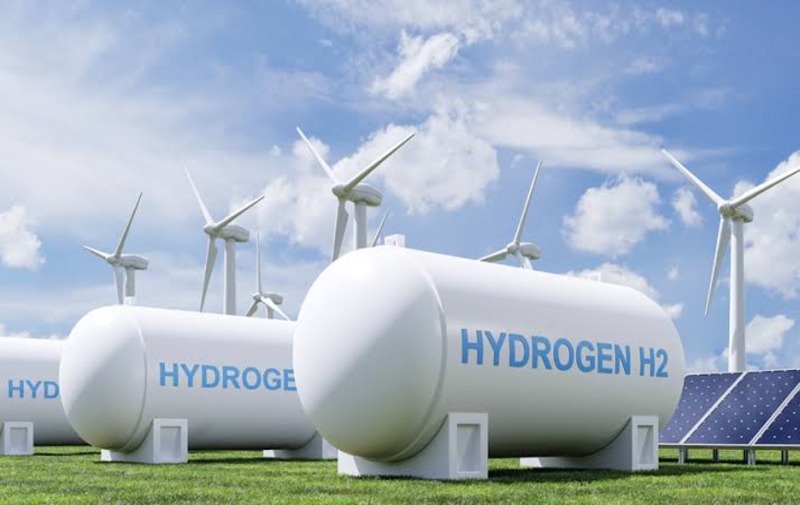In an extraordinary breakthrough that has captured the attention of the global scientific community, researchers have uncovered vast, naturally occurring reserves of white hydrogen in some of the world’s most iconic mountain ranges—the Swiss Alps, the Pyrenees, and the Himalayas. This clean, sustainable energy source is poised to transform the energy sector, offering a potential alternative to fossil fuels and a pathway toward a low-carbon future.
What is White Hydrogen and How is it Produced?
White hydrogen, often referred to as natural or geological hydrogen, is a form of hydrogen that occurs naturally within the Earth’s crust. Unlike the industrial hydrogen commonly used today, which is produced through energy-intensive methods, white hydrogen is generated through a process called serpentinization. In this natural process, water interacts with iron-rich rocks, producing hydrogen gas without any external intervention. This process occurs deep within the Earth, and its discovery could signal the dawn of a new era in energy.
A Breakthrough Discovery in Clean Energy
The discovery of these vast reserves of white hydrogen in regions like the Swiss Alps, the Pyrenees, and the Himalayas comes after years of research and exploration. The study was led by Frank Zwaan, a geologist, and involved Geoffrey Ellis from the U.S. Geological Survey (USGS). Their team used sophisticated computer models to predict areas where significant deposits of white hydrogen might be found. Their predictions have proven true, with large reserves now confirmed.
According to Geoffrey Ellis, this discovery represents a “significant milestone” in the quest for cleaner, more sustainable energy sources, which could revolutionize the energy landscape.
The Promising Potential of White Hydrogen
White hydrogen has the potential to be a versatile and clean energy resource with a wide range of applications. Here are some of the most promising ways this new energy source could change industries and societies worldwide:
Energy Generation: White hydrogen can be used in power plants to generate electricity. The best part? It produces zero carbon emissions when used as fuel, making it an ideal candidate for replacing traditional fossil fuels like coal and natural gas.
Transportation Fuel: Just as hydrogen fuel cells are being explored for vehicles today, white hydrogen could become a low-carbon alternative for transportation, helping to reduce the automotive industry’s carbon footprint.
Industrial Applications: Beyond transportation and power generation, white hydrogen could revolutionize industrial processes. It can be used in the production of chemicals, fuels, and materials, all while leaving no harmful emissions behind.
Transforming the Global Energy Landscape
The implications of this discovery are far-reaching. If these vast reserves of white hydrogen can be tapped into and harnessed efficiently, the energy sector could experience a dramatic shift. With countries around the world seeking solutions to mitigate climate change, white hydrogen offers a clean, sustainable, and abundant energy resource that could replace much of the reliance on fossil fuels.
However, challenges lie ahead. For white hydrogen to become a reliable source of energy, researchers and industries must overcome technical hurdles related to its extraction, transportation, and storage. Significant infrastructure investments will be required to ensure that this energy source can be harnessed safely and cost-effectively.
While the world moves toward greener energy solutions, white hydrogen could play a key role in enabling this transition. Still, we must be cautious of any potential pitfalls and ensure that its extraction and usage do not create new environmental challenges. As Frank Zwaan, one of the leading scientists behind the discovery, puts it: “Just as oil was once a rare geological oddity, white hydrogen could become the next pillar of the global economy.”
Is This Discovery the Future of Clean Energy?
So, is this breakthrough real or just another scientific claim? The answer is clear: this discovery is not just another theory—it’s a real, tangible finding with the potential to change the way we think about energy. The reserves of white hydrogen identified in the Swiss Alps, Pyrenees, and Himalayas are not a figment of imagination but a solid step toward a cleaner, more sustainable energy future.
Scientists around the world are now turning their attention to how best to exploit this resource. As the world faces increasing pressure to reduce carbon emissions and find alternative energy solutions, the role of white hydrogen in reshaping the global energy landscape is undeniable.
While the path ahead is not without its challenges, the discovery of these white hydrogen reserves marks a promising beginning. With further research and investment, this clean energy source could be a cornerstone of a sustainable future for generations to come.

